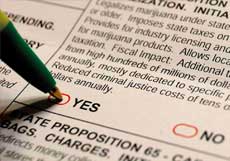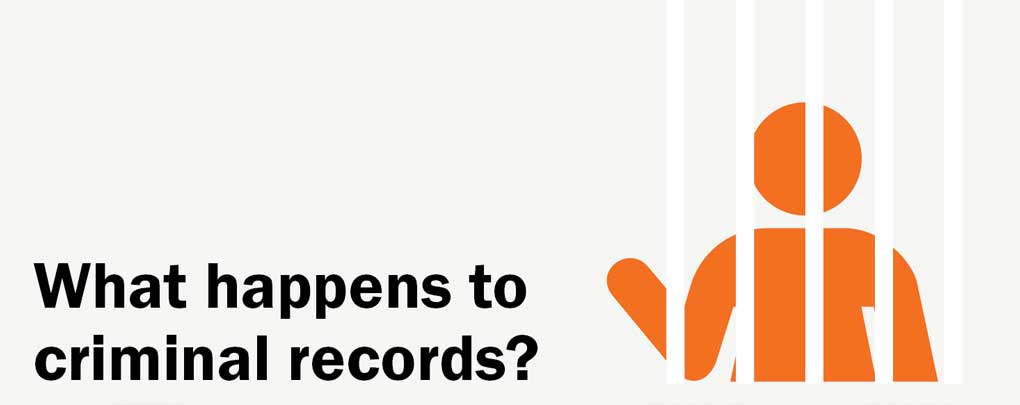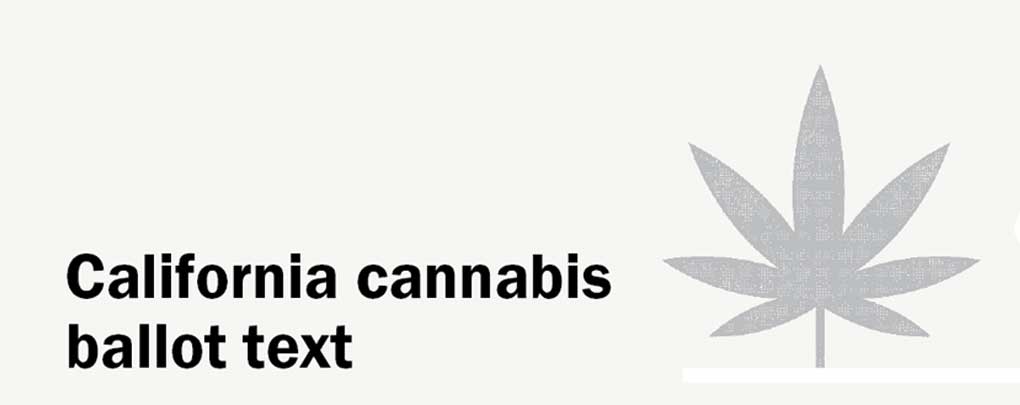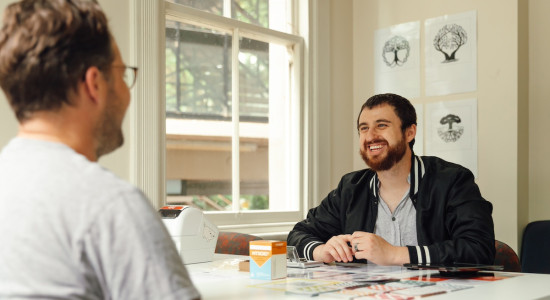The big ask: Ensuring the best legalisation referendum question

Next year, or perhaps the year after, New Zealanders will vote in the first government referendum anywhere in the world on legalising cannabis. Right now, however, there is no clear picture of what question will appear on the ballot or how that question might be arrived at. That’s going to be important, and really, that’s just the start of the complexities we’re going to have to work through. Russell Brown tells us more.
Justice Minister Andrew Little told Matters of Substance that deciding on the question put to the public in the impending cannabis legalisation referendum is obviously going to be very important.
But does he have any views about what a good question would look like?
“I haven’t really given it any depth of thought at all,” he says
The irony is that the art and science of using direct democracy to reform cannabis law is now well established – in America at least. But in US states, ballot questions have been composed by their proponents who design them for a winning outcome. California’s bullet-pointed question only reached state voters after it had been repeatedly tested and refined through polling, with the aim of crafting a proposal acceptable to the greatest possible number of voters.
That process can’t be applied to a referendum in which it is the government that writes the question and where the goal is not to push a result one way or the other but to provide for a fair vote. Nonetheless, there are lessons that might apply. And the first is that it’s not just the question but how it’s asked that has an impact.
“In general, ‘regulation’ sells much better than ‘legalisation’ since the latter allows opponents to claim it will lead to anarchy,” observes Sanho Tree, who directs the Drug Policy Project at the Institute for Policy Studies in Washington.
“It’s clear that how you ask the question can have a measurable impact on the outcomes,” agrees Steve Rolles, Senior Policy Analyst for the Transform Drug Policy Foundation in the UK.
The risk is that, without having a legal blueprint in place before people vote, everyone can impose their fears – and their hopes – on the outcome.
Andrew Geddis“And in a tight contest, it could easily swing it one way or another. There will, for example, be a natural bias towards a position framed in the positive rather than the negative, so ‘Should we legalise YES/NO?’ or ‘Should cannabis remain illegal YES/NO?’ might produce marginally different outcomes, even though they are essentially the same question.
“We know from polling research that more people say yes if asked if they support the legalisation and regulation of cannabis than merely the legalisation of cannabis. And support rises further if you ask ‘Do you support the legalisation and regulation of cannabis in the same way as alcohol?’.”
Alison Holcomb, Director of Strategy for the Washington State branch of the American Civil Liberties Union, helped design the successful I-502 legalisation initiative in Washington where she saw a desire for reassurance.
“Seven years ago, in Washington State, voters responded strongly [in polling] to messages that reassured them about tight control of this novel policy experiment,” she says.
“Messages about freedom and individual rights fell flat. I’m not sure how relevant those insights may or may not be today, but I continue to believe that acknowledging basic human nervousness about change is always important.”
Drug Policy Alliance Legal Director Tamar Todd, who helped write California’s successful Proposition 64 in 2016, says that even where voters there were “on board” for legalisation, they still wanted to know what it meant.
“Who gets the licences, who grows it, how big are the companies? It’s not so much of an issue in the US, but should the government itself be the producer or seller? What should be the legal age to use? What products should be made legal? What should the legal allowable amount be? Should people be able to grow it at their homes non-commercially and share it?
“It’s not necessarily good for the voters in a referendum to answer all those specific policy details – but at the same time, if the government itself and the policy makers and regulators and law makers aren’t on board with the concept, there’s a lot of ways they can obstruct the will of the voters.”
... the reality is people are going to want to know what it means in practice if you change the status quo. There are legitimate questions around that.
Andrew LittleThe two New Zealand constitutional lawyers consulted by Matters of Substance, Graeme Edgeler and Andrew Geddis, strongly believe that New Zealand voters should be presented with a specific proposal as an alternative to the status quo. Indeed, Edgeler believes the proposal should take the form of a law to be triggered by a vote in favour and that it should be “a fully worked-through proposal of exactly what a regulated cannabis market would look like”.
Geddis agrees and says, “The ideal way to proceed would be for a Bill to already have been drafted and passed by the House, with the referendum result then automatically deciding whether or not that Bill becomes law. This is how the vote to introduce MMP proceeded. The benefit of this approach is that it would allow everyone to know what it is they are voting on. We can all see in advance what form of reform we are talking about. Is it decriminalisation? Is it legalisation? Would it permit grow-your-own or a full market regime?
“The risk is that, without having a legal blueprint in place before people vote, everyone can impose their fears – and their hopes – on the outcome. Consequently, we have not previously had binding referenda on issues in the abstract without the public actually getting to decide the precise outcome. So, for example, we didn’t just vote on the question ‘Do you want to change the flag?’, then leave it to Parliament to decide what a new flag would look like. We instead got to choose between a bunch of different possible options, knowing that a vote one way or the other would produce a certain result.”
Both the electoral reform and flag referenda were two-step processes, which seems an unlikely – and in Edgeler’s view, undesirable – prospect in this case.
“A two-step referendum process doesn’t seem like a good idea,” he says. “We’d be voting in a vacuum. If there are concerns about there being support for one type of regulation but not another, then the pre-legislative process and select committee process should tease that out – public meetings, focus groups, market research.”
“I think if you have a very clear, simple question, there will be no doubt what the will of the people is,” says former Prime Minister Helen Clark, a self-declared ‘friend of reform’ who is now a member of the Global Commission on Drug Policy.
“And you should prepare legislation to reflect that. In an ideal world, you might go to the people with the legislation to be triggered, but that in itself might introduce a lot more complexity into the debate about the Bill. And complexity is always confusing.”
Confusing or not, the signs are that there won’t be a law to be voted on. Andrew Little acknowledges that “the reality is people are going to want to know what it means in practice if you change the status quo. There are legitimate questions around that. Whether you’d go to the extent of having a law ready to go, that’s something we will have to think through. There is no question that we will have to have answers to the obvious questions about what it will look like if you decriminalise, legalise, do whatever.”
Rolles believes a referendum without a worked-up law is viable, but “at a minimum, the government should have a clear statement of guiding principles for any proposed regulated market model and at least a framework policy document that described the broad contours of how the system would work. It would also usefully spell out the detail of the process by which the model would be fully developed, implemented, evaluated and reviewed. This wouldn’t have to be a fully drafted piece of legislation that could follow later. But it would need to be something credible and accessible to the voting public to form the basis of an informed and focused debate.”
Rolles says the perils of a status-quo-versus-unspecified-change question have been highlighted by Britain’s Brexit referendum.
think it should be a balanced discussion in that way and not be co-opted by either moral panic or people saying that everything’s going to be fine.
Chlöe Swarbrick“The Remain option was simple, but the Leave option is actually a fiendishly complex spectrum of options relating to a vast array of legal frameworks, agencies and institutions. This meant that, before the vote, advocates on both sides made wildly conflicting claims about what Leave involved, horribly confusing the debate. And then, since the vote, there’s been profound conflict over what it actually means in practice and what people were voting for.”
But another recent referendum, Rolles says, could provide a model for New Zealand. Ireland’s abortion referendum was foreshadowed by a Citizens’ Assembly of 99 randomly chosen (but demographically representative) voters.
“They gave up their weekends to listen to experts, affected women and a variety of advocacy groups before making their recommendations on which the draft reform Bill was shaped. A process of deliberative democracy such as this – even on a smaller scale – would, I think, be a brilliant model for New Zealand. It would give the people of New Zealand a sense of ownership of the reform proposals and would acknowledge the obvious fact no one understands what New Zealanders think better than New Zealanders. The debate could only be the richer for it.”
Green MP Chlöe Swarbrick, who fronted the members’ Bill on medical cannabis originally drafted by her colleague Julie Anne Genter, also believes an innovative approach is required in the run-up to a vote.
“I think we can’t continue to do it the way we’ve always done it – trying to do the consultations at fancy hotels or conference venues at ridiculous times of the day, which nobody with a family or a job or study can get to. We need to ensure it’s accessible but also that the tone of the debate is raised. I think it should be a balanced discussion in that way and not be co-opted by either moral panic or people saying that everything’s going to be fine. Because we are going to need to have regulations.”
One key challenge in getting the question right is the time available. Little says that the government has begun thinking through the issues. But the referendum process was not funded in this year’s Budget, and nothing can really be done until that happens – which means May 2019 at the earliest.
Could reforms from somewhere else be adopted to speed up the process of giving the people something to vote on? The highly commercial models adopted in most legalised US states may turn off even supporters of reform in New Zealand – and the state distribution model in Uruguay could be seen as too restrictive. The closest match is probably Canada, whose cannabis reform will be completed this year.
But even that’s not straightforward. Individual Canadian provinces have been given the freedom to go quite different ways. Alberta, for example, will license private retailers, while Ontario will allow only a limited number of state-run stores. But other elements of the Canadian reform – package labelling, control of advertising, possession limits, permission for home growing, a ban on licensed commerce, relationship to existing anti-smoking regulations and, most fraught of all, a drug-driving limit – could be picked up in a New Zealand proposal.
And one element of the Canadian reforms, the clear signal that past cannabis convictions would not be a barrier to entering the new, legal cannabis industry, would be a game-changer for Māori voters, says Khylee Quince, Associate Head of School and Director of Māori and Pacific Advancement at AUT.
“We’re going to have to go there,” says Quince. “That’s going to be key to a yes vote from Māori, because if we maintain that collateral consequence of conviction, then that shuts Māori out altogether.”
There’s a further complication. Little indicated to Matters of Substance that the referendum would probably not be binding – meaning Parliament could be in the position of interpreting the will of the people. So even if the engagement process is top notch and voters were presented with clear choices, it is possible they might not get what they voted for.
Having agreed to a referendum that was the policy of only one governing party – New Zealand First, although to say its idea lacked detail would be kind – the government has a lot of thinking to do.
And it’s coming from a standing start. When Matters of Substance asked Little about looking at international examples, he said the government would “see how other countries like Canada have done it most recently, how they conducted their campaign leading up to their referendum”.
Canada, of course, did not have a referendum – although its pre-legislative Task Force, headed by former Deputy Prime Minister Anne McLellan, might be an idea worth copying.
One thing is clear, however. The road to The Question is itself littered with many questions. Addressing cannabis reform via a referendum may not turn out to be the easy option at all.

A feature of California’s Proposition 64 was that it provided for anyone with a conviction for an offence that would not exist after legalisation to have that conviction erased. Given that a key argument for cannabis law reform is the harm caused by criminal convictions, could it be part of the question here?
Justice Minister Andrew Little isn’t sure. “I haven’t really thought about that,” he says. “We recently did the law on expunging historical homosexual offences, because in an enlightened age, that law was immoral. Whether Parliament would take the same view about old drug laws, I’m not sure. Certainly Parliament changes its mind on laws, but it doesn’t necessarily overturn convictions on historical laws.”
He says the question hadn’t come up before Matters of Substance raised it, “but if it comes up, I guess we’ll have to have a response to it”.
International experts were largely in favour of an expungement provision as a component of legalisation.
Tamar Todd says the provision was crucial in California because of the historical racial disparity in arrests, prosecutions and convictions – but also because of the consequences of a drug conviction in the state. “It’s carried forward on their criminal record, and that prevents them from doing anything. Getting any kind of professional licence, becoming a firefighter, getting loans to go to school … all aspects of people’s lives.”
“I think expungement of convictions for crimes that are no longer crimes under a new framework is essential on basic legal and ethical principles and should form part of any proposal,” says Steve Rolles. “I can’t see any possible arguments against this.”
He notes that, in parts of California and in Massachusetts, attempts to redress past wrongs have gone beyond “mere expungement”.
“They are giving people with former convictions, as well as people from designated socially deprived communities – groups who have carried the greatest burden of cannabis enforcement harms – priority access to the market in terms of licensing applications for production and retail.
“In Massachusetts, they are additionally offering training – in management, accountancy, marketing, horticulture – to support these groups’ entry into the industry and even have a budget to publicise the equity programme amongst affected communities. I would love to see something like this in New Zealand – which like most places, has its own legacy of discriminatory policing and iniquitous impacts of drug enforcement.”
AUT’s Khylee Quince, a specialist in Māori and the justice system, agrees.
“That would be a meaningful step in terms of restorative justice,” she says. “A really significant step.”
It might not be an easy sell first up, acknowledges Alison Holcomb. Washington State voters were being asked to make “an historic, unprecedented” break with the past in her state’s 2012 initiative. Adding such a provision to I-502 would have added to the risk of failure.
“California had the benefit of following us four years later.”

The full text of Proposition 64, the 2016 ballot initiative that legalised and regulated cannabis in California, runs to well over 100,000 words. It’s safe to assume that almost no one who voted on it read it.
But what people did read when they went to vote is worth looking at. The long-form ballot summary was this:
“Legalizes marijuana under state law, for use by adults 21 or older.”
“Designates state agencies to license and regulate marijuana industry.”
“Imposes state excise tax of 15% on retail sales of marijuana, and state cultivation taxes on marijuana of $9.25 per ounce of flowers and $2.75 per ounce of leaves.”
“Exempts medical marijuana from some taxation.”
“Establishes packaging, labelling, advertising, and marketing standards and restrictions for marijuana products.”
“Prohibits marketing and advertising marijuana directly to minors.”
“Allows local regulation and taxation of marijuana.”
“Authorizes resentencing and destruction of records for prior marijuana convictions.”
The initiative regulations also require a shorter “ballot label” summary, which includes the assessment of the state’s Legislative Analyst’s Office:
“Legalizes marijuana under state law, for use by adults 21 or older. Imposes state taxes on sales and cultivation. Provides for industry licensing and establishes standards for marijuana products. Allows local regulation and taxation. Fiscal Impact: Additional tax revenues ranging from high hundreds of millions of dollars to over $1 billion annually, mostly dedicated to specific purposes. Reduced criminal justice costs of tens of millions of dollars annually.”
Different again was the wording on the petition that exceeded the 365,880 signatures required for inclusion on the ballot. Even after passing the threshold, it was shaped and amended in response to polling.
“One of the things that we learned in the polling was that people actually wanted a lot of the answers to those questions upfront,” says Tamar Todd, Legal Director of the Drug Policy Alliance, who jointly authored the initiative. “What would be allowed and what the system would look like. It was more of a comfort level, they wanted to see detail.
“They also wanted to know about taxation – because people also like the idea of regulated products being taxed.”
Groups to be persuaded included participants in the illicit cannabis market – some of them families who had relied on that income for a generation or more. And, of course, people who were against cannabis per se. They, too, had to be listened to, says Todd.
“You need to be able to convince people who don’t like cannabis at all that legalisation of cannabis is a better policy than criminalisation of it.”
Recent news

A new approach to reporting on drug data
We've launched a new tool to help you find the latest drug data and changed how we report throughout the year.

Drug Foundation celebrates significant growth of drug checking service
Significant growth in drug checking availability and uptake is helping to prevent harm in more parts of the community.

Report: What we saw at drug checking in 2023
Nearly 1 in 5 drugs checked were different from what was expected.

